Enhanced Sensing Performance of Integrated Gas Sensor Devices †
Abstract
:1. Introduction
2. Materials and Methods
3. Results
3.1. Device Simulation
3.2. Sensing Performance
4. Discussion
Author Contributions
Acknowledgments
Conflicts of Interest
References
- Yi, S.; Tian, S.; Zeng, D.; Xua, K.; Peng, X.; Wang, H.; Zhang, S.; Xie, C. A novel approach to fabricate metal oxide nanowire-like networks based coplanar gas sensors array for enhanced selectivity. Sens. Actuators B Chem. 2014, 204, 351–559. [Google Scholar] [CrossRef]
- Mohsen, G.; Ansari, M. Tin Oxide Microheater for Chemical Sensors. IOP Conf. Ser. Mater. Sci. Eng. 2016, 108. [Google Scholar] [CrossRef]
- Bhattacharyya, P. Technological journey towards reliable microheater development for MEMS gas sensors: A review. IEEE Trans. Device Mater. Reliab. 2014, 14, 589–599. [Google Scholar] [CrossRef]
- Sharma, A.; Tomar, M.; Gupta, V. Enhanced response characteristics of SnO2 thin film based NO2 gas sensor integrated with nanoscaled metal oxide clusters. Sens. Actuators B Chem. 2013, 181, 735–742. [Google Scholar] [CrossRef]
- Lahlalia, A.; le Neel, O.; Shankar, R.; Kam, S.Y.; Filipovic, L. Electro-Thermal Simulation & Characterization of a Microheater for SMO Gas Sensors. J. Microelectromech. Syst. 2018, 27, 529–537. [Google Scholar]
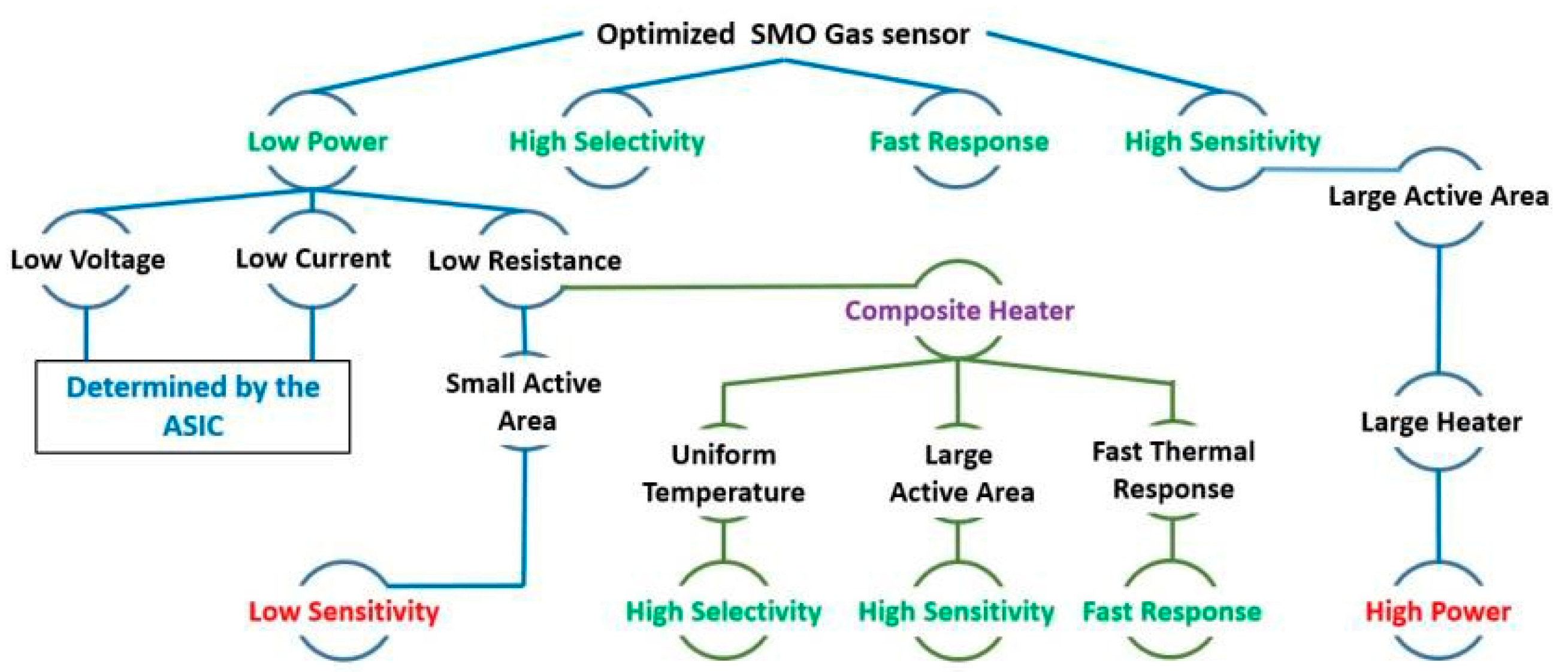
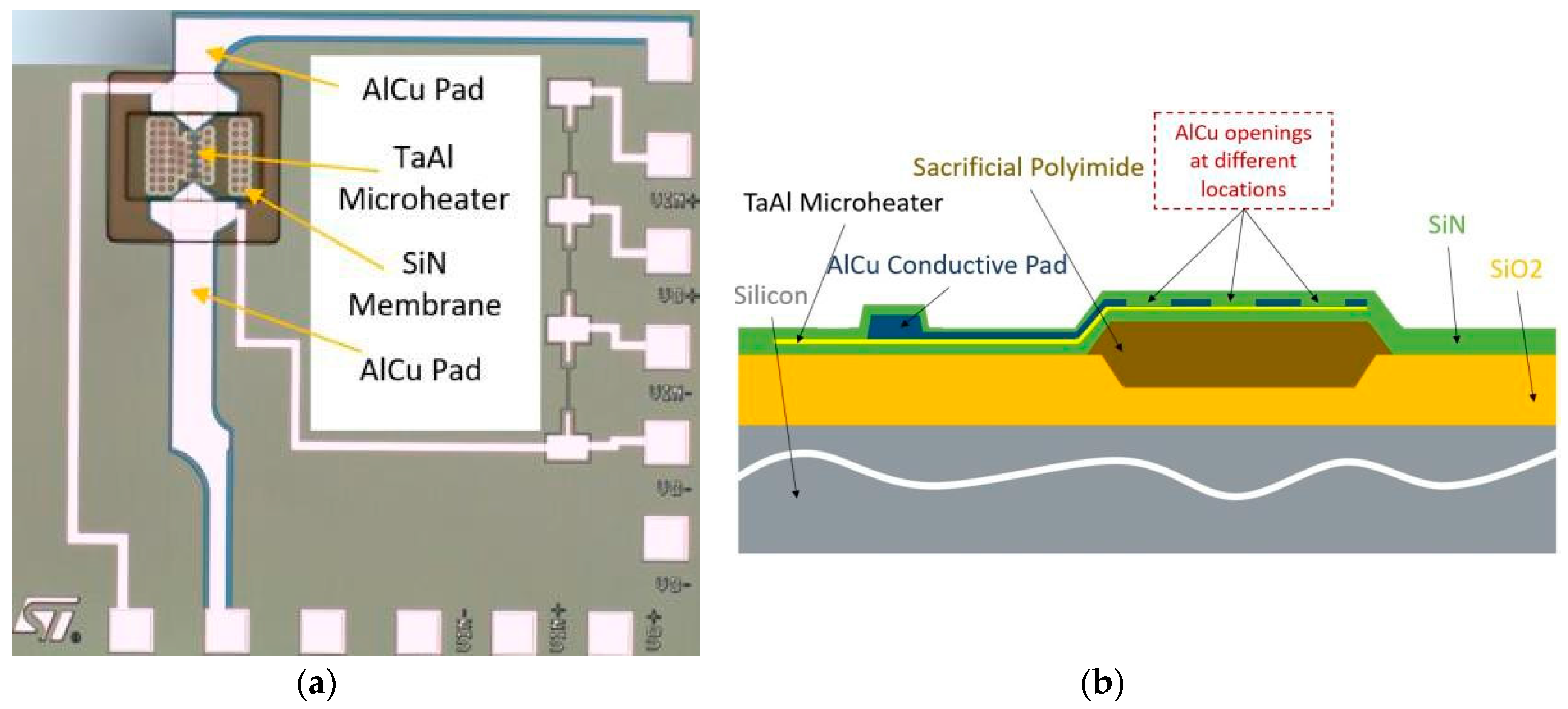
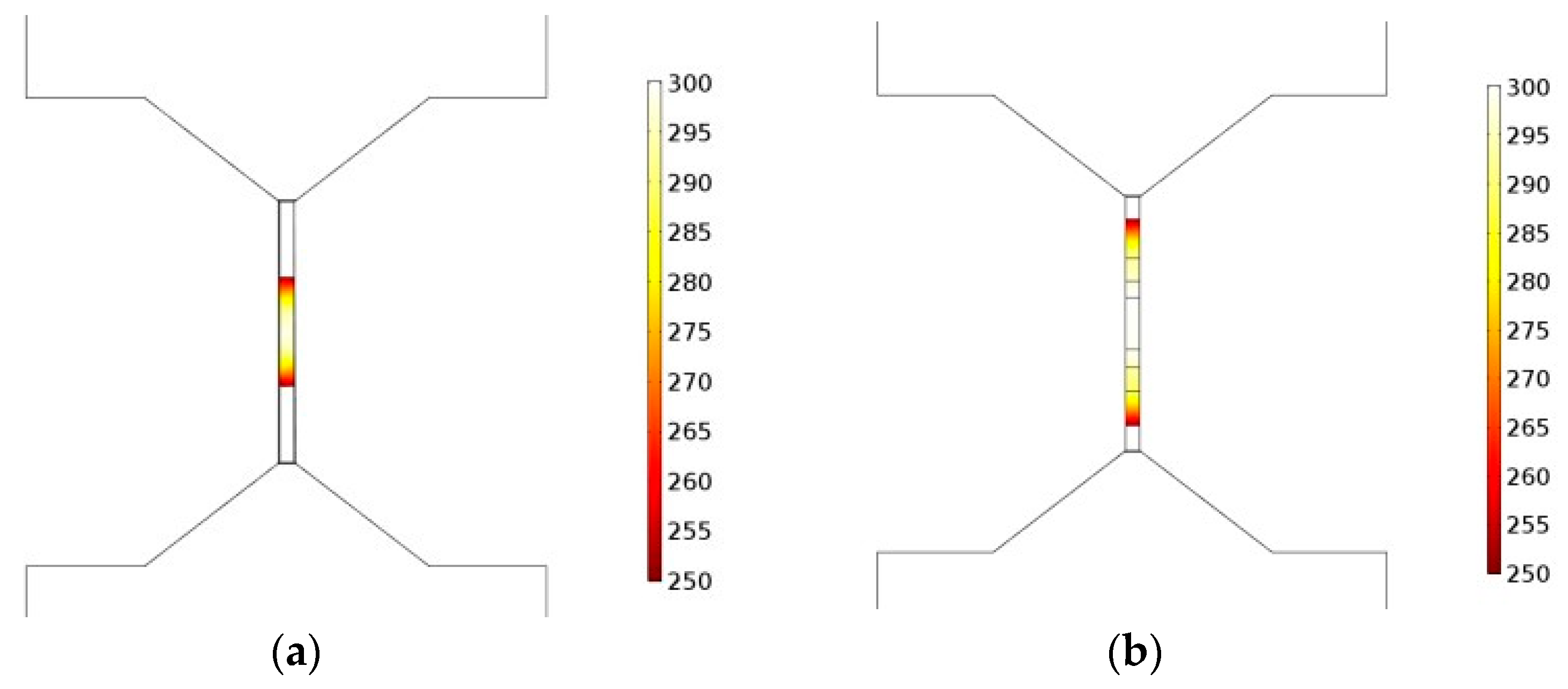
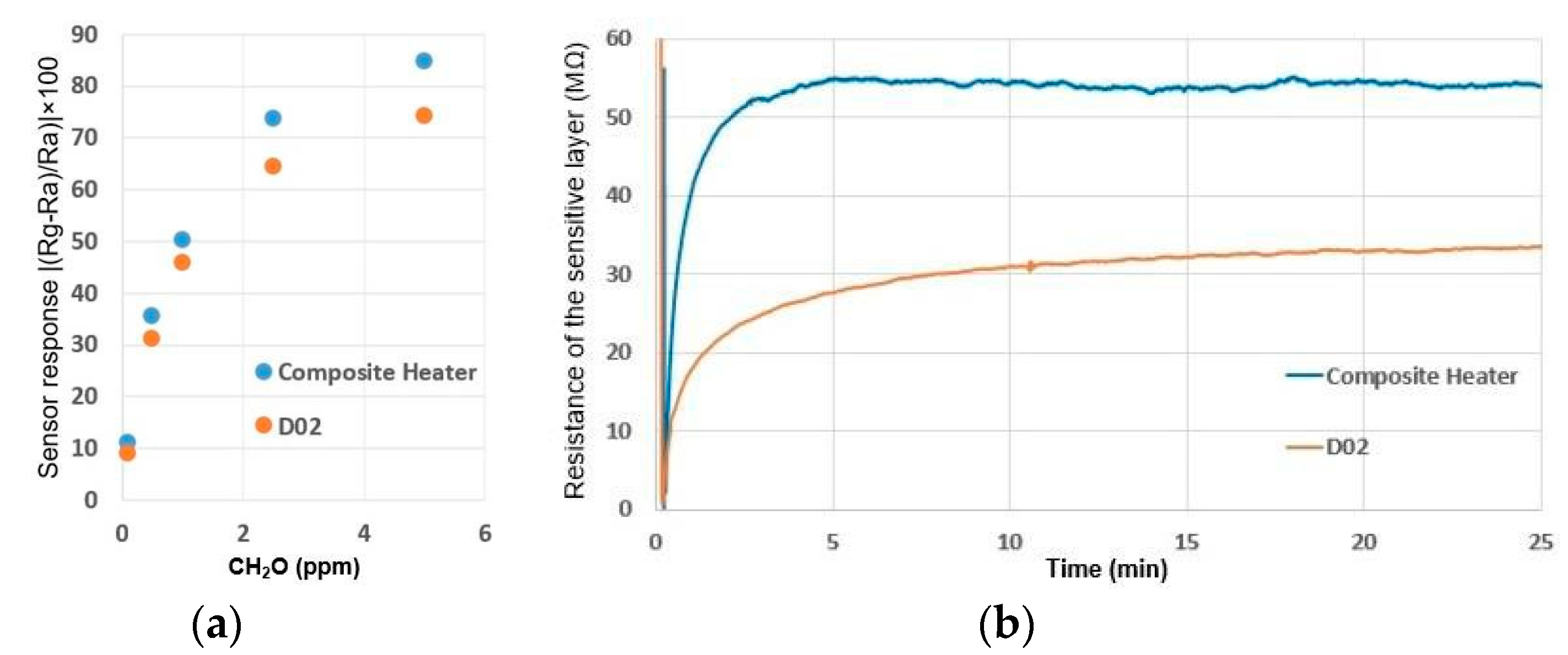
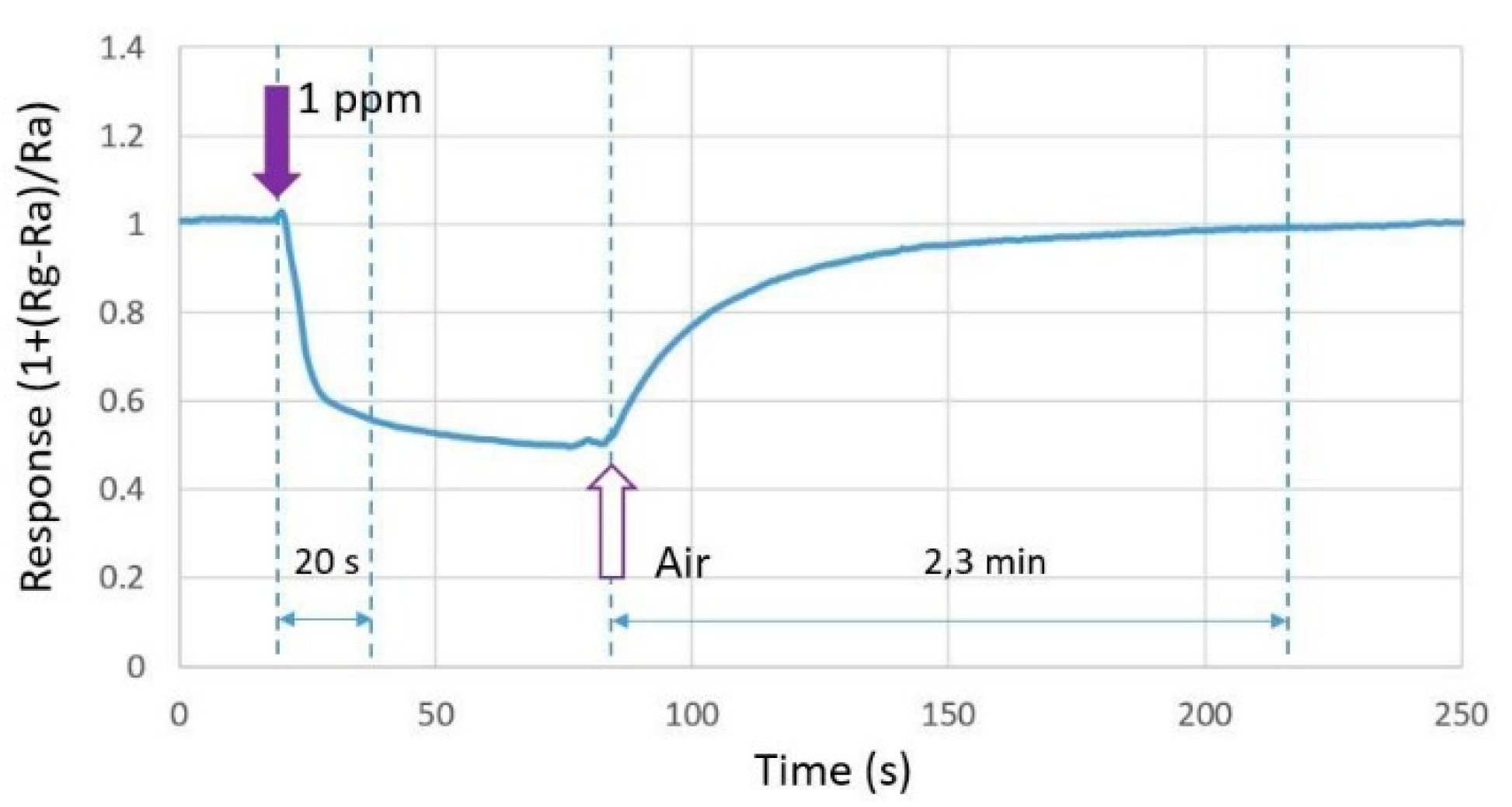
Publisher’s Note: MDPI stays neutral with regard to jurisdictional claims in published maps and institutional affiliations. |
© 2018 by the authors. Licensee MDPI, Basel, Switzerland. This article is an open access article distributed under the terms and conditions of the Creative Commons Attribution (CC BY) license (http://creativecommons.org/licenses/by/4.0/).
Share and Cite
Lahlalia, A.; Neel, O.L.; Shankar, R.; Selberherr, S.; Filipovic, L. Enhanced Sensing Performance of Integrated Gas Sensor Devices. Proceedings 2018, 2, 1508. https://doi.org/10.3390/proceedings2131508
Lahlalia A, Neel OL, Shankar R, Selberherr S, Filipovic L. Enhanced Sensing Performance of Integrated Gas Sensor Devices. Proceedings. 2018; 2(13):1508. https://doi.org/10.3390/proceedings2131508
Chicago/Turabian StyleLahlalia, Ayoub, Olivier Le Neel, Ravi Shankar, Siegfried Selberherr, and Lado Filipovic. 2018. "Enhanced Sensing Performance of Integrated Gas Sensor Devices" Proceedings 2, no. 13: 1508. https://doi.org/10.3390/proceedings2131508
APA StyleLahlalia, A., Neel, O. L., Shankar, R., Selberherr, S., & Filipovic, L. (2018). Enhanced Sensing Performance of Integrated Gas Sensor Devices. Proceedings, 2(13), 1508. https://doi.org/10.3390/proceedings2131508






